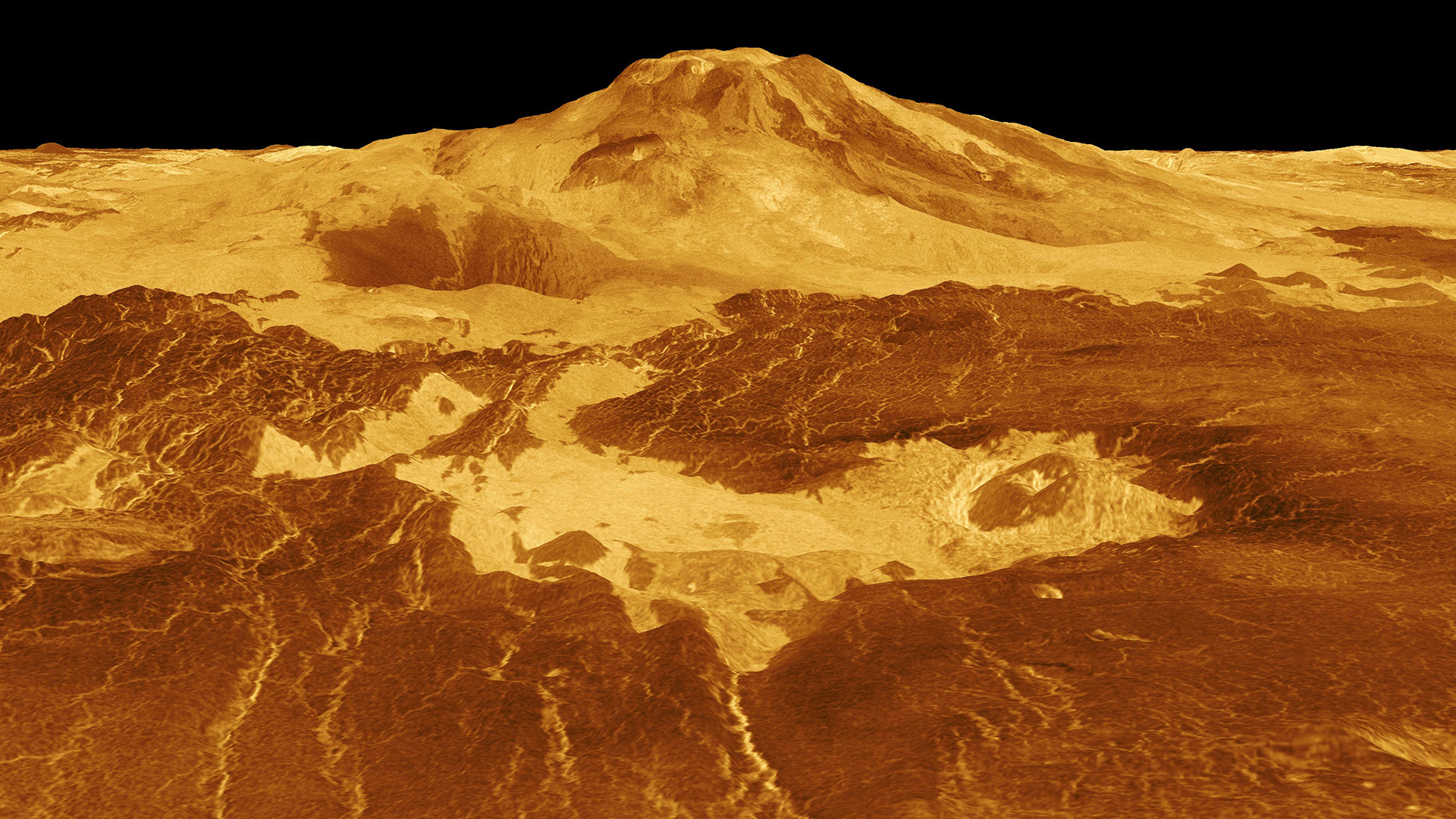Scientists may have finally figured out why Venus is such a hellscape
Ancient Venus may have looked more like Earth than previously imagined. New research suggests that Earth’s neighbor may have once looked more like our own planet and less like the hellish landscape we now know it to be.
Though technically closer to our Sun than Earth, Venus may have once been in the Sun’s habitable zone – the area around a star where liquid water can exist – when our Sun was much dimmer. As such, ancient Venus may have had oceans spanning across its surface. But, its proximity to the Sun would have eventually led that water to evaporate and escape the surface, leading to a dense atmosphere.
Further, this new research posits that massive volcanos on the surface of the planet may have helped lay waste to a lusher, greener ancient Venus that scientists believe once existed. These constant volcanic eruptions, which are seen heavily on display with Maat Mons, a massive volcano that lava has flowed from continuously for centuries, may have helped shape Venus into the acidic hothouse it is today.
But, it wasn’t always that, the research also suggests. Instead, Venus may have once been a temperate and wet world, somewhat like our own. This ancient Venus could have possibly been ripe for alien life to grow and thrive.
The research itself is based around large igneous provinces, which scientists have long explored a record of on Earth. These provinces are essentially the products of periods of large-scale volcanism, which can last tens of thousands or even hundreds of thousands of years. The belief is that ancient Venus underwent some similar periods like this, depositing tons of volcanic rock and lava flows on the planet.
During these periods, hundreds of thousands of cubic miles of volcanic rock can be deposited on the surface. NASA says that this is more than enough molten rock to bury the entire state of Texas half a mile deep. Today, Venus boasts temperatures of around 864 degrees Fahrenheit on average, and scientists believe the ongoing lava flows we see now tore apart ancient Venus, transforming it.
The scientists say they aren’t sure what would have caused these extended periods of volcanism in ancient Venus. The hope, though, is that studying Earth’s own large igneous provinces will provide some revelations. With NASA planning more research around Venus in the coming years, hopefully, we’ll learn more about our neighboring planet.
Ancient Venus may have looked more like Earth than previously imagined. New research suggests that Earth’s neighbor may have once looked more like our own planet and less like the hellish landscape we now know it to be.
Though technically closer to our Sun than Earth, Venus may have once been in the Sun’s habitable zone – the area around a star where liquid water can exist – when our Sun was much dimmer. As such, ancient Venus may have had oceans spanning across its surface. But, its proximity to the Sun would have eventually led that water to evaporate and escape the surface, leading to a dense atmosphere.
Further, this new research posits that massive volcanos on the surface of the planet may have helped lay waste to a lusher, greener ancient Venus that scientists believe once existed. These constant volcanic eruptions, which are seen heavily on display with Maat Mons, a massive volcano that lava has flowed from continuously for centuries, may have helped shape Venus into the acidic hothouse it is today.
But, it wasn’t always that, the research also suggests. Instead, Venus may have once been a temperate and wet world, somewhat like our own. This ancient Venus could have possibly been ripe for alien life to grow and thrive.

The research itself is based around large igneous provinces, which scientists have long explored a record of on Earth. These provinces are essentially the products of periods of large-scale volcanism, which can last tens of thousands or even hundreds of thousands of years. The belief is that ancient Venus underwent some similar periods like this, depositing tons of volcanic rock and lava flows on the planet.
During these periods, hundreds of thousands of cubic miles of volcanic rock can be deposited on the surface. NASA says that this is more than enough molten rock to bury the entire state of Texas half a mile deep. Today, Venus boasts temperatures of around 864 degrees Fahrenheit on average, and scientists believe the ongoing lava flows we see now tore apart ancient Venus, transforming it.
The scientists say they aren’t sure what would have caused these extended periods of volcanism in ancient Venus. The hope, though, is that studying Earth’s own large igneous provinces will provide some revelations. With NASA planning more research around Venus in the coming years, hopefully, we’ll learn more about our neighboring planet.
